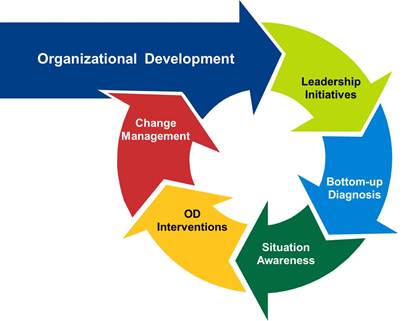Employee Satisfaction Levels in HRM and in CPM
To adapt to new demands and ensure business success, organizations have initiated profound processes of transformation, aiming to add value to its shareholders (stakeholders), customers, employees, suppliers, ultimately the entire value chain. The central point of this value chain lays with peoples especially employees of the organization. If technology demands change in core business processes, it also expects to change in the traditional methods of dealing organizational human resources (Dunn, 2010, pp. 02).
A contemporary vision of people management, assumes that the world is changing, people are changing and hence the organizations are in the process of change. Just as people today have more and better access to information, knowledge, new technologies, companies are also changing their old concepts or paradigms in constant learning process. The learning organizations understand the importance of their employees and for them it is often necessary to unlearn in order to learn.In the management of people, the need for change is constant and urgent. The old paradigms of the industrial era and the military model for management of people has completely transformed and the contemporary era of knowledge, cooperation, sustainability and the new information technologies has taken place in modern business organization (Pučėtaitė et al., 2008, pp. 325).
Traditional human resources practices revolve around employee motivation and satisfaction and his performance. But with the rapid changes in business environment and phenomenal growth of technological advancement, such methods become incapable to produce the results. Contemporary People Management (CPM) has provided the solution. CPM has gone ahead of merely satisfying employees to making them satisfied. An organization with contemporary vision of Personnel Management, has strategic clarity inmaking the mission, vision, values and objectives and is assimilated and practiced by all employees consciously and unconsciously creating an alignment and cooperation among the employees (Pinnington et al., 2007, pp. 267).
Employee Satisfaction Discussion
In postmodern business environment, moral values and ethical standards have become increasingly complicated. This has affected the practices of HR, where a decision by HR manager can significantly produce drastic impacts on people’s job and their future employment opportunities.
The practice and theoretical framework of Human resource management is facing several challenges and most important of them are globalization challenge, HR innovation challenge, the sustainability challenge and the challenge of attracting and retaining people. These four challenges can be transformed into a competitive strength of the organization through CPM (Bartram, 2010, pp. 26). The challenge of HR innovation itself is a course to achieve Contemporary people management. Now business organizations are moving towards knowledge management, which include the transformation of techniques, processes, structures and systems, which can lead to the creation and sharing of knowledge throughout the organization. Resultantly, Global knowledge economy starts to develop which helps to increase the knowledge about different cultures, globalization process and intensify the knowledge about production processes. Australian federal government has since 1970 supported and implemented several such schemes and proposals which help to internationalize Australian business.
Changing business practices and innovation in HR practices and policies has created different ethical dilemmas. HR does not take place in isolation. It affects the life of employees and the ethical consideration of organization as well as of HR manager hassignificant impact of the performance of the employees.As the process of internationalization has started to increase its pace, we can see the dominance of neo liberal moral and ethical standards, which are regulated by a balance between alternative ends and scarce resources. It is simply based on utilitarian approach in order to select best method for the maximum number of people. When interests of people are satisfied with the help of common good, it will produce environment of return of favour.State of common good that can be achieved through utilitarian approach, not only benefits employee but it also produce good results for organization (Klikauer, 2012, pp. 74).
Several ethical theories have elaborated the impact of ethical principles on business practices. Utilitarianism approach is rooted in consequentialism and according to it; the rightness or wrongness of our action is described best by the consequence of that action. An action is said to be morally right if it has produced satisfaction to the majority of the people. In consequentialism, there is no universal moral standard unlike virtue ethics. But it depends on the situational awareness and the will of the majority of the people. Some critics believe that it has some demerits and in extreme cases, the will of the people can be unjust and illegitimate.Despites its flaws business manager apply utilitarian approach in their organization because this propagates the goodness of the people at large (Greenwood, 2013, pp. 357).
The concept of utilitarianism has subjective matter and it is very difficult to determine accurately the level of maximum utility.It involves situational assessment and awareness and considers only available information. In this situation, it is difficult to evaluate the impact of decision based on utilitarian in long terms aspect. Similarly, it is very difficult to accurately determine the majority of people. So like other ethical and moral standards, utilitarianism has some weaknesses (Audi, 2007, pp. 596).
The objective of the management is to produce a satisfied employee so that he/she can perform better and an organization can produce profit. Well-being of the employee in this case is a mean to an end but it is not an end itself. However it does not simply mean that an organization is interested in the wellbeing of employee, but it is more interested in a productive employee. Utilitarianism approach does not simply mean that producing greatest good for the large number of people, but it motivates management to produce satisfaction among the employees. If 10 per cent annual increase in the salary fails to bring any kind of satisfaction within the organization, it simply would be rendered as increase in the cost of organization.In the context of utilitarianism, bringing satisfaction is not the total objective of the management, but satisfaction principle in ethical model is to prevent employees from any damage or problems. Power can only be exercised on employees in the situation so that harm to the majority of the people can be avoided.In this way, management creates a civilized community within the organization (Klikauer, 2010, pp. 51).

We have seen the paradigm shift in the practices and policies of traditional human resource management. In classical human resource management, employees were considered as a liability where as in contemporary people management, employees are regarded as an asset.As the organizations are moving towards learning organization and are based on knowledge, highly educated and independent employees demands cooperative attitude and no longer they are considered for granted. This trend demands in operational procedures of HR. classical HR practices cannot boost the performance of such employees and the sharp edges of traditional HR practices, in result are have been removed (Van Marrewijk et al., 2003, pp. 175).
Contemporary practices of HR has taken strategic position among the organization and is regarded the change agent and facilitator for transformation and restructuring processes. It has manifested itself as a strategic partner between the employee and organization. Modern practices of HR are based on knowledge and constant learning process. It pays individual attention on human asset management, human culture management and human potential management. Cultural diversity is no longer regarded as a problem. Contemporary human resource practice transformed cultural diversity into a strength through strong communication skill and motivating their employees to seek knowledge from different cultures (Worland &Manning, 2005, pp. 07). Traditionally, HRM works closely with the bosses and managers but contemporary people management works closely with employees. The role of HR practices has changed. Now making employee satisfied is not sufficient and efficient for business managers. Employees need to feel the real satisfaction and they all should be prevented from harm and injustice. Utilitarianism approach of satisfaction for all has become the central point of contemporary people management.
Conclusion
We can safely conclude that HR has occupied the strategic position in the organizational structure and conventional methods of HR are no longer effective to accommodate the needs of employees as well as organizational objectives.It should not be implied that the classical HR framework and practices have completely become useless and obsolete, but it has provided a basic structure for contemporary people management. Because organization itself is nothing without employees and he/she is an active agent of transferring raw material into a finished good, he/she must be satisfied and happy, so that his performance bring satisfaction to organization and its customers.
Postmodern economy is based on knowledge and learning. Organization that understand the importance of knowledge, keep on changing their HR policies.The classical concept of employee’s high performance with lowest cost of employees has failed to fulfil the business objectives. Employees are no longer regarded as liabilities. They are considered the asset and the value of the asset increase with the time. satisfaction of employees has preceded employee satisfaction. This demands changes in the ethical values of organization. It is through Utilitarianism approach that the goodness of majority of the people can be achieved.It becomes the duty of the manager to increase the total volume of satisfaction of employees. Similarly, utilitarianism approach encourages all those actions which can produce wellbeing for the majority of the people.
References
Academic Books
Bartram, T., Kramar, R., & De Cieri, H. (2010). Human resource management: strategy, people, performance. North Ryde, N.S.W., McGraw-Hill Education.
Klikauer, T. (2010). Critical management ethics.Houndmills, Basingstoke, Palgrave Macmillan.
Klikauer, T. (2012). Seven management moralities.Houndmills, Basingstoke, Hampshire, Palgrave Macmillan.
Pinnington, A. H., Macklin, R., & Campbell, T. (2007). Human resource management: Ethics and employment. Human Resource Management: Ethics and Employment, xii.
Redman, T., & Wilkinson, A. (Eds.). (2009). Contemporary human resource management: text and cases. Pearson Education.
Academic Journals
Audi, R. (2007). Can utilitarianism be distributive? Maximization and distribution as criteria in managerial decisions. Business Ethics Quarterly, 17(4), 593-611.
Dunn, B. H. (2010). Human Resource Management: The Importance of Getting It Right Employee Satisfaction. Rangelands, 32(4), 2-3.
Greenwood, M. (2013). Ethical analyses of HRM: A review and research agenda. Journal of business ethics, 114(2), 355-366.
Greenwood, M., & Freeman, R. E. (2011).Ethics and HRM. Business and Professional Ethics Journal, 30(3/4), 269-292.
Pučėtaitė, R., &Lämsä, A. M. (2008).Developing organizational trust through advancement of employees’ work ethic in a post-socialist context Employee Satisfaction. Journal of Business Ethics, 82(2), 325-337.
Simmons, J. (2008). Ethics and morality in human resource management. Employee Satisfaction Social responsibility journal, 4(1/2), 8-23.
Van Marrewijk, M., &Timmers, J. (2003). Human capital management: New possibilities in people management. Journal of Business Ethics, 44(2-3), 171-184.
Worland, D., & Manning, K. (2005). Employee Satisfaction, Strategic human resource management and performance.




